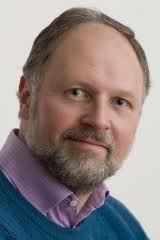Printed in the Spring 2013 issue of Quest magazine.
Citation: Smoley, Richard. "From the Editor's Desk" Quest 101. 2 (Spring 2013): pg. 42.
 In many areas of human endeavor, our range of knowledge is immensely greater than it was a century ago. In one area, however, the only thing we have really learned is the depth of our ignorance.
In many areas of human endeavor, our range of knowledge is immensely greater than it was a century ago. In one area, however, the only thing we have really learned is the depth of our ignorance.
I'm referring to homosexuality, both male and female (and its close relatives, bisexuality and transgenderism). For most of Western history, educated opinion knew, or thought it knew, what these were: they were vices pure and simple. In the late nineteenth and early twentieth centuries, the newborn discipline of psychology came to see homosexuality less as a vice and more as a mental disorder (caused by a smothering mother, a distant or absent father, or some such influence). But in the late twentieth century, psychologists and psychiatrists acknowledged that homosexuality was not a disorder, but a natural variation that appears in humans and many animals. It is caused, we are told, by some combination of genetic, hormonal, and environmental factors—which is to say that the experts have no idea of why it exists at all.
If homosexuality is unnatural, then why has it persisted so long, often in the face of vicious persecution? But if it is natural, what purpose does it serve in nature? On the face of it, the very existence of homosexuality presents a serious challenge to the Darwinian theory of sexual selection, which, Darwin wrote, "depends, not on a struggle for existence, but on a struggle between the males for possession of the females; the result is not death to the unsuccessful competitor, but few or no offspring." What could possibly be more disadvantageous to reproductive survival than desire for the same sex? And yet homosexuality, permitted or persecuted, admired or denigrated, has always endured.
For the most part the esoteric traditions have regarded homosexuality as an aberration, as exemplified by the twentieth-century spiritual teacher G.I. Gurdjieff, who once said, "Only a person who is completely normal as regards sex has any chance in the [esoteric] work. Any kind of 'originality,' strange tastes, strange desires . . . must be destroyed from the very beginning." And yet Gurdjieff spent much of the 1930s working with a group of women, nicknamed "The Rope," that consisted mostly of lesbians. For all the condemnation, explicit and implicit, it's safe to say that homosexuality has always been present among esotericists, just as it has been in mainstream society.
I won't devote this page to arguing for acceptance of LGBTs. (This is the common acronym used to designate lesbians, gays, bisexuals, and transgendered people.) That has been done eloquently and movingly by the articles by Jimmy Creech and David Christensen in this issue. But I think it's worth devoting a bit of attention to a possible esoteric explanation for this mysterious phenomenon.
The classic Theosophical literature has few if any references to homosexuality or its kin; rather it tends to extol brahmacharya or celibacy as the royal road to spiritual adepthood. Thus we have to go further afield for some esoteric explanation for homosexuality.
There would seem to be no fact more obvious than that in humans there are two sexes. And yet esoteric thought in its many forms teaches that there are three primordial forces that give rise to existence. They have been given various names. The Christians speak of the Father, the Son, and the Holy Spirit. The Kabbalists of Judaism speak of the three letters present in the Tetragrammaton—yod, heh, and waw. The Chinese sacred ternary is heaven, earth, and man. And in Hindu philosophy there are the three guns or principles—rajas, tames, and sattva. Gurdjieff's terms for them are probably the most transparent: "Holy Affirming" "Holy Denying," and "Holy Reconciling."
As above, so below'—this is probably the most commonly quoted dictum in esotericism. And yet here we seem to have a very palpable discrepancy between what is above—in the world of primordial forces—and what is below, as manifested in human biology. It leads me to ask, could the presence of a number of people who do not fit into the standard roles of masculine and feminine embody this missing third, "reconciling" principle in humanity?
To return to Gurdjieff yet again, in his convoluted allegory Beelzebub's Tales to His Grandson he tells of a planet somewhere in the universe where beings reproduce by way of three sexes, and whose offspring are, as he puts it, "ideal in our Megalocosmos." While his explanations of this process are far too intricate to describe here, they do hint that some embodiment of the third force is possible and perhaps even desirable in the sexes of living beings.
All of what I have been saying here is, of course, wildly speculative. But we are left with one ineluctable truth. Sex has to do with far more than reproduction. It may even have to do with more than expressing love—however noble and beautiful that may be in its own right. The varieties of human sexual expression are virtually infinite, and I think we should not be too quick to judge them. What to one person seems degraded or revolting is to another a source of ecstasy. In the end we do not really know why. This all suggests that the subject of sex, and its relation to love, should be approached with humility, open-mindedness, and an intense reluctance to condemn.
Richard Smoley

